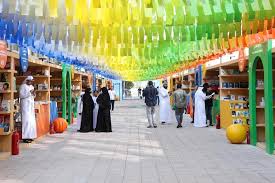The New Face of Al Ain
Al Ain, often known as the “Garden City” for its lush landscapes and cultural heritage, is transforming into a modern urban hub that blends tradition with cutting-edge technology. The emirate is embracing futuristic developments aimed at sustainable living, making it an exciting place to live, work, and explore. From significant expansions in wildlife conservation to the introduction of smart city innovations, this transformation sets Al Ain apart as a model for the future.

Al Ain Zoo’s Major Expansion
A key project in the city’s evolving landscape is the expansion of the Al Ain Zoo, a vital initiative that will position it as a global leader in wildlife conservation. The expansion includes new animal enclosures, larger habitats, and improved visitor facilities, offering an immersive experience for all. This development aims to introduce more biodiversity, showcasing endangered species and providing educational programs that emphasize the importance of wildlife conservation.

The zoo’s educational focus will inspire future generations to care for the environment. It integrates both nature and technology, enhancing visitor experiences while preserving the region’s ecosystems. This expansion reflects Al Ain’s commitment to creating spaces that promote sustainability.
Smart City Features: Technological Transformation

As part of its Vision 2030, Al Ain is also introducing smart city features that aim to improve the quality of life for its residents. These include smart traffic systems, energy-efficient buildings, and digital infrastructure, all designed to reduce environmental impact while streamlining daily activities.
Utilizing Internet of Things (IoT) technology, Al Ain will employ data analytics to manage everything from traffic flow to waste management. Smart sensors will monitor pollution levels, air quality, and energy use, making it possible to optimize city operations for a greener, more sustainable future.

Sustainable Architecture: Blending Tradition with Innovation
A notable aspect of Al Ain’s growth is its seamless blend of modern developments with traditional Emirati design. The city’s new buildings incorporate sustainable architecture that preserves the cultural identity while embracing new technologies. These designs use solar panels, wind energy, and natural cooling methods inspired by traditional Arabic structures, such as wind towers and courtyards.
By incorporating energy-efficient solutions into its urban design, Al Ain minimizes the ecological footprint of new developments, setting an example for sustainable urban planning.
Green Spaces and Eco-Friendly Initiatives
Al Ain is committed to expanding its green spaces, creating a vibrant, eco-friendly city. New parks, gardens, and nature reserves are being developed to promote outdoor activities and well-being. The city also employs advanced water management systems to recycle water and reduce consumption, ensuring these green spaces remain sustainable throughout the year.
Al Ain’s dedication to environmental stewardship is evident in the creation of eco-friendly public spaces, providing residents and visitors with access to nature while supporting sustainable initiatives.

Transforming Transportation: A Sustainable Future
Al Ain’s transportation system is undergoing a transformation to meet sustainability goals. The city plans to introduce electric buses, bike-sharing programs, and improved public transport networks, reducing reliance on private cars. This shift towards eco-friendly transportation options will help lower the carbon footprint and create a more livable environment for all.
Electric vehicles (EVs) are being promoted as a clean alternative to traditional fuel-based cars, with new EV charging stations being installed across the city. These changes are part of Al Ain’s broader commitment to sustainability and smart city features.
Tourism and Innovation
Al Ain’s innovative infrastructure is designed not only to serve its residents but also to attract global tourists. Combining modern facilities with cultural attractions, the city is positioning itself as a hub for both innovation and heritage tourism. Visitors can explore the city’s rich history, enjoy newly expanded wildlife experiences, and experience cutting-edge smart city technology.
By focusing on sustainable tourism and technology-driven attractions, Al Ain is setting itself up as a global destination that appeals to tourists seeking unique, forward-thinking travel experiences.

Conclusion
Al Ain’s embrace of futuristic development reflects its commitment to creating a sustainable, connected, and vibrant community. By integrating smart technologies, sustainable infrastructure, and preserving its cultural heritage, it is paving the way for a new era of urban living. As the city grows, it is set to become a model for other cities that aim to balance modernity with tradition and sustainability with innovation.
The future is bright for Al Ain, and it stands poised to lead the way in creating cities that are not only technologically advanced but also deeply connected to their cultural roots.
Sources:
- Website
- Smart City Initiatives
- UAE Sustainable Architecture
- Green Spaces Initiative
- Transportation Plans
You can also read about, UAE’s Visa Revolution.















